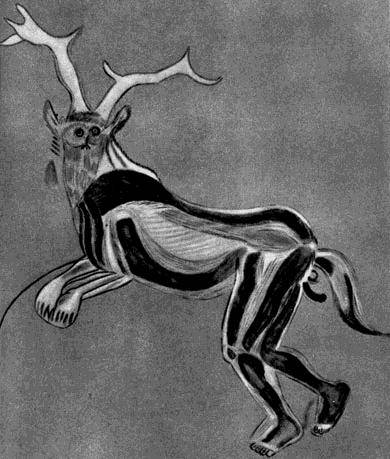Skin Disease. A message from the Soul
Reference
Macguire, Anne (2004) Skin Disease. A message from the Soul A treatise from a Jungian perspective of Psychosomatic Dermatology.
In the early pages there are some interesting ideas about the skin as an item of the body that is preserved, and also, how the skin is the corporeal ego in many ways.
When thinking of prehistoric or older times there are many aspects of the human body and those of the animal kingdom that are preserved for different reasons. Particularly with animals, the skin - along with horns, bones and teeth, were preserved. Very often for both ceremonial and practical reasons. The skin has been a focus of preservation and played an important role of carrying the imago of the particular animal beyond the grave into the ceremonies, battle, relationships etc. Besides mummification, I can't think of where the human skin has been preserved…although I don't know.
I find the idea of a corporeal ego very interesting. In this respect I can see how the skin must be, or potentially, is in a most dynamic and eventful relationship with psyche and the vicissitudes of psychic life. Where the body and psyche meet, why should it not be so…how interesting is that.
p29 Interestingly, etymologically, the name Arthur is derived from 'bear'.
p33 The Tekenu
p35 The cove paintings from Caverne des Trois Fréres in Ariége in France - 'the Sorcerer' or stag-horned man. Here is a recreation of the image sketched from the cave painting.
p37 Xipe-Totec - 'Our Lord the Flayed', a pre-Columbian Mexico vegetation deity. “…as the god of renewal and vegetation represented the fresh skin which the Earth receives from the recurrent green in the spring time.” Lots more here in this chapter about flaying of the human skin.
p40 The finger cutters
p41 dactyls = fingers, cf dwarves. Kabiri and dactyl. Think hands and fingers and evil.
p42 An excellent reference to Jung here (ref 24):
p187 Ref. 8
p189 There is an interesting reference here to a book on Alchemy by Jung, Ref 9 : “if the unconscious be localised anywhere it is in the basal ganglia … the snake really represents the vegetative psyche, the basis of the instincts.”
p195 Agathodaemon the Greek god as the good spirit of the cornfields and the vineyards, not to be confused with Agathodaimon the Alchemist.
p201 'Field thinking' “Von Franz1 describes “synchronistic thinking as field thinking, the centre of which is time”.”
